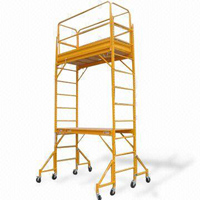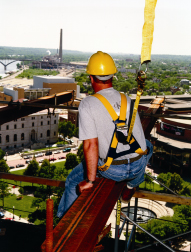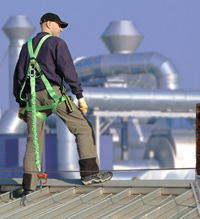Fall Protection

Occupational fatalities caused by falls remain a serious public health problem. The US Department of Labor (DOL) lists falls as one of the leading causes of traumatic occupational death, accounting for eight percent of all occupational fatalities from trauma. Before you can begin a fall protection program, you must identify the potential fall hazards in your workplace. Any time a worker is at a height of six feet or more, the worker is at risk and needs to be protected by some type of fall protection system. However, regardless of the fall distance, fall protection must be provided when working over dangerous equipment and machinery.

Falls from ladders and roofs still account for the majority of falls. Identifying fall hazards and deciding how best to protect workers is the first step in reducing or eliminating fall hazards. There are a number of ways to protect workers from falls including conventional systems such as guardrail systems, safety net systems and personal fall protection systems (fall arrest systems, body harnesses, positioning systems and travel restraint systems) as well as through the use of safe work practices and training. The use of warning lines, designated areas, control zones and similar systems are permitted by OSHA in some situations and can provide protection by limiting the number of workers exposed and instituting safe work methods and procedures. These alternative systems may be more appropriate than conventional fall protection systems when performing certain activities. Thinking about fall hazards before the work begins will help to manage fall hazards and focus attention on prevention efforts. If personal fall protection systems are used, particular attention should be given to identifying attachment points and to ensuring that employees know how to properly don and inspect the equipment.


In order to minimize these types of accidents, Providence College works with and trains maintenance personnel as well as outside contractors to ensure that proper fall protection is used when working at heights. If you have questions about fall hazards or fall protection, contact the Office of Environmental, Health and Safety.
Office of Environmental Health & Safety
Harkins LL18
401.865.2549
401.865.2082
Greg Myers
Environmental Compliance Officer
401.865.1585





